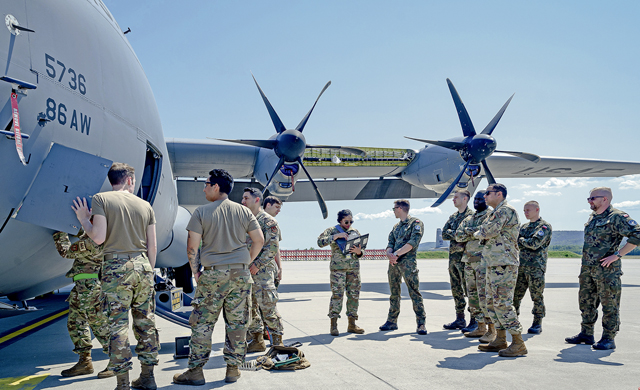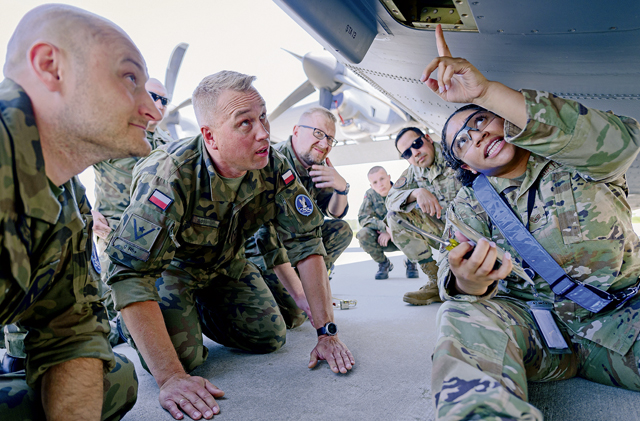
U.S. Air Force Airmen assigned to the 86th Maintenance Group and the 435th Contingency Response Support Squadron taught Polish air force airmen assigned to the 33rd Air Force Base C-130 Squadron, Poland, how to load aircraft, unload aircraft and build flares at Ramstein Air Base, June 5-8.
The first day of the three-day training course consisted of classroom training on the logistics and step-by-step process of installing chaffs and flares onto a U.S. Air Force C-130J Super Hercules aircraft, helping the only C-130 avionics squadron in the Polish air force refine their flare loading and unloading procedures.
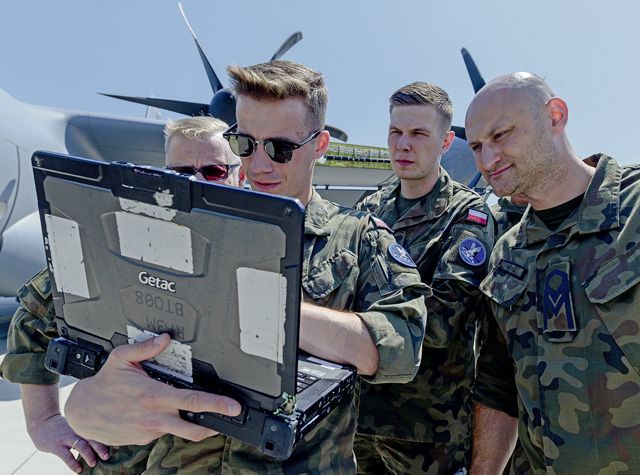
Flares and chaffs protect aircraft by forcing infrared threats — such as heat-seeking, surface-to-air or air-to-air missiles — to lock to the heat signatures of the flares rather than an aircraft’s engine. Burning up to 1,600 degrees Celsius, the flares are much hotter than the roughly 750 degree Celsius exhaust of a C-130 engine. When infrared missiles seek out the hotter temperature, aircrews deploy the flares to mimic an aircraft in afterburn or the beginning of the engine’s exhaust source and redirect the threat.
“It is essential we learn the U.S. Air Force way of working with flares and chaffs,” said Polish air force Lt. Wiktor Roszak, 33rd AFB C-130 Squadron avionics shop commander. “As the only C-130 avionics team in Poland, getting a different point of view is vital to growing and learning more effective ways of conducting procedures on our C-130s.”
After the classroom training, the Polish avionics team was given hands-on training to learn flare installation on a U.S. Air Force C-130J. The Polish airmen also visited the 86th Munitions Squadron and had the chance to build their own flares.
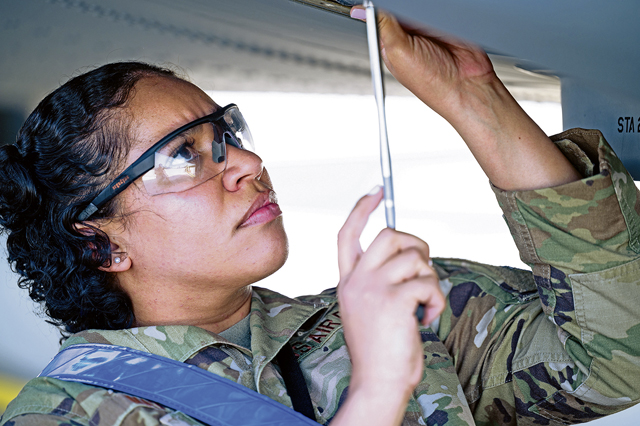
For the flares, two approaches are possible: pyrotechnic and pyrophoric. Infrared-decoy flares contain pyrotechnic compositions upon ignition of the decoy flare, releasing infrared energy and visible smoke and flames. Pyrophoric flares eject a special pyrophoric material, which ignites when exposed to oxygen, out of an airtight cartridge.
Safety is a top priority while building and dealing with flares. Extensive procedures are used to minimize the risk of injury and ensure the safety of Airmen, explained U.S. Air Force Tech. Sgt. Erik Silva, 435th CRSS aircraft maintenance air advisor.
“Before any work can be done, we have to make sure there is no stray voltage to trigger the flare canisters,” said Silva. “This could lead to a misfire that would shoot a flare directly at the operator [and end in a fatality].”
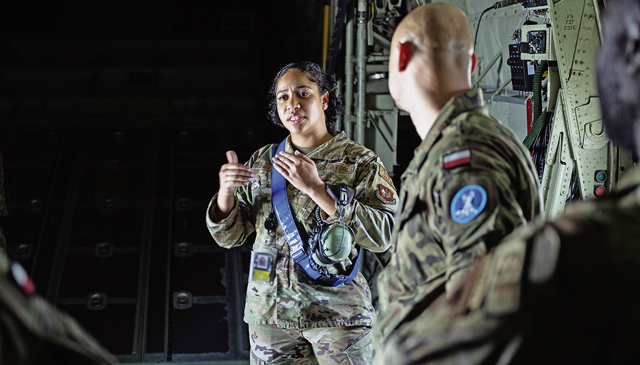
U.S. Airmen assigned to the 435th CRSS who serve as air advisors assess, train, advise, assist and equip foreign personnel to meet the host nation’s aviation needs in support of U.S. interests.
The 435th Air Ground Operation Wing strives to build and maintain relationships with NATO allies and partners. Training like this increases readiness across NATO to ensure timely and coordinated responses across the European theater.
